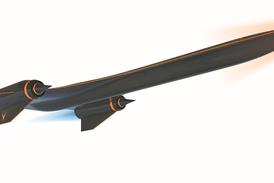Was crew's decision irresponsible? The three-engined British Airways flight is an incident that has been brewing for some time (Flight International, 8-14 March). I retired after 34 years from BA in 2002, having flown most types, with the last five years on Boeing 747s. Although I was never put in a similar position, I have given it considerable thought. We were directed by "flightcrew orders" to get the aircraft back to base if possible. Obviously, the BA crew met all safety height gates and diversion airports windows, but their fundamental problem was fuel, because on three engines the aircraft uses 5% more fuel, (10% on two engines). The aircraft flew lower and had a lower true airspeed, hence each hour that passed the distance covered was not as flight planned, which is why the 747 had to land at Manchester. But what about mid-Atlantic or Greenland? Losing a further engine at this point would cause the fuel flow to increase yet again. Did the 747 have sufficient fuel to make the designated destination? I doubt it. The trouble is the flight management system two-engine page does not open up until you are actually on two engines. For this reason I believe the flight was irresponsible. What was the status of the fuel system when the crew declared a fuel emergency approaching Manchester? Did a fuel tank pressure warning light come on because of low fuel state (pump feed uncovered) or did it fail? These warning lights come on with 900kg (1,980lb) or less of fuel in the tank in question. John Frohnsdorff Haddenham, Bucks, UK
Extended arm Your editorial (Flight International, 1-7 March) about the British Airways Boeing 747 engine shut-down, says that if polled, most passengers would have preferred to turn back. However, the crew's decision to continue seems fairly logical and (it is to be hoped) unpressured. They were unlucky that a second problem, an indication that they may have been deprived of some remaining fuel, arose later. A comparable news story occurs every day for which nobody solicits passenger opinion: extended twin-engine operations (ETOPS) airliners crossing the Pacific. I suggest you conduct your emotive "poll" on one of these flights when an engine has to be shut down by asking: "We are nearly 3h from the nearest airport, an engine has failed and one identical engine is keeping us from certain death: are you happy with this situation – a decision made on commercial grounds". Better still, make informing passengers of this risk a prerequisite of all ETOPS travel and see how quickly the world's airlines rush to buy Boeing 747s, Airbus A340s and A380s. Peter Dennis Gwynedd, UK
Much-needed clarity Your Comment "Balancing act" (Flight International, 1-7 March) regarding the loss of one engine, brings much needed clarity to an aspect of flight safety long overdue – ie "less than zero risk". Only by pushing past cost and practicality into truly unnecessary safety measures can we achieve negative risk and offset the positive risk in the world. One might assume that once "safety is assured" the pilot was free to take whatever action would provide the best value. Such an attitude shows a regretable misunderstanding of US jurisprudence that now transends English common law to be based on the lowest common denominator. You might assume that an unnecessary extra stop would add risk in itself – but additional risk is always acceptable if it avoids a different risk and if it adds significant cost or delay. One might assume that the pilot should make the best technical decision regardless of the passengers' opinions. I am sure that we would all agree that if even one passenger believed, or might believe, that it might be unsafe to continue (perhaps after legal counsel), then all involved should be forced to spend an extra day traveling – a small price for negative risk. In short, it is naive to believe that, in today's complex world, technical decisions should be left to the technically competent. So-called technically correct decisions are, by definition, incorrect and probably unsafe if the outcome also provides some benefit. Tom Mulera Mesa, Arizona, USA
A300 risks Concerning structural failure of AA587, I'm not sure that either Flight International ("Report Lays AA587 to rest...maybe", 25-31 January) or Graeme McLeod (Letters, 8-14 February) grasp just how vulnerable the Airbus A300-600 is to repetitive pedal inputs. The rudder deflected to its stops under a pedal force of about a fifth of what we feel in our feet and legs when walking. Four successive applications of such a light force broke the fin off an airliner. Other aircraft seem marginally better, but we do not know for sure without checking structural response to repetitive inputs. That is why the US Federal Aviation Administration and European Aviation Safety Agency should heed the US National Transportation Safety Board call for new rules on rudder sensitivity. Martin Aubury Canberra, Australia
Source: Flight International























